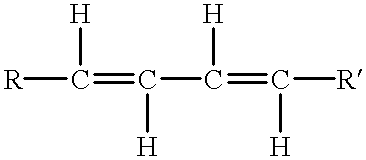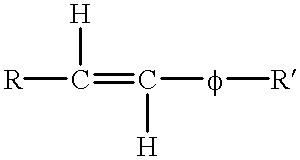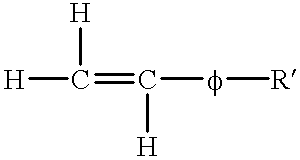Mitigation of fouling by thermally cracked oils (LAW852)
a technology of thermal cracking and oil, applied in thermal non-catalytic cracking, fuels, organic chemistry, etc., can solve the problems of high pressure drop, insoluble solids, and reducing the efficiency of refinery process equipmen
- Summary
- Abstract
- Description
- Claims
- Application Information
AI Technical Summary
Problems solved by technology
Method used
Image
Examples
Embodiment Construction
Flexicoking Unit Fractionator
A flexicoking unit was in danger of being shut down because of fractionator fouling. A flexicoking unit is described in more detail in J. H. Gary and G. E. Handwerk, 1994, Petroleum Refining: Marcel Dekker. The fractionator, shown in the figure, separates the volatile product from the scrubber of the flexicoking unit reactor into three liquid streams and one gas stream by distillation. Often foulant is found on the trays in the bottom pumparound (BPA) section of the fractionator. However, in this case, popcorn coke also accumulated in the bottom pool, flowed out with the oil, and plugged the pump suction strainers in the BPA circuit. The pump had to be shut down every two hours for cleaning that put the pump in danger of breaking down. If this had happened, it would have shut down the flexicoker. Lowering the bottom pool temperature from 575-580.degree. F. to 565.degree. F. did not help to reduce the strainer cleaning frequency. The diene value of the li...
PUM
 Login to View More
Login to View More Abstract
Description
Claims
Application Information
 Login to View More
Login to View More - R&D
- Intellectual Property
- Life Sciences
- Materials
- Tech Scout
- Unparalleled Data Quality
- Higher Quality Content
- 60% Fewer Hallucinations
Browse by: Latest US Patents, China's latest patents, Technical Efficacy Thesaurus, Application Domain, Technology Topic, Popular Technical Reports.
© 2025 PatSnap. All rights reserved.Legal|Privacy policy|Modern Slavery Act Transparency Statement|Sitemap|About US| Contact US: help@patsnap.com



